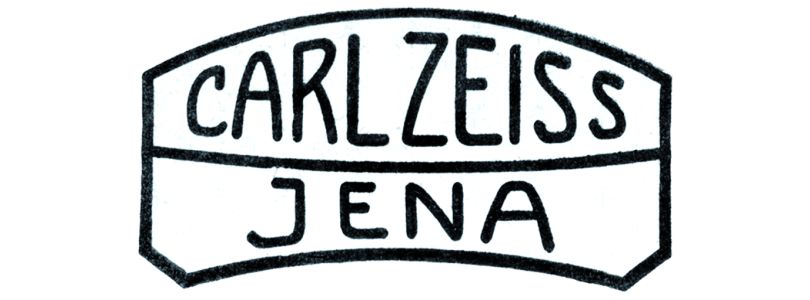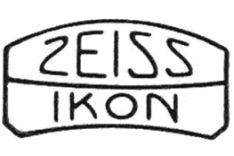Content
Carl Zeiss Jena

The original sign from the trade mark application of 1904
In cooperation with science
On 17 November 1846, Carl Zeiss founded an optical workshop in Jena. Only one year later, he started to build simple microscopes. It soon became clear to the young mechanic that he would only be successful in cooperation with science. In 1863, he therefore persuaded the physicist Ernst Abbe to join the company, so Zeiss started to manufacture microscopes based on scientific principles in 1873. The company quickly became a globally operating manufacturer of optical devices, such as binoculars, planetarium projectors or surgical microscopes.
A lens as logo

Deviating from the standard – lens logo on a photographic catalogue of 1910
The first trade mark application was filed with the Imperial Patent Office (Reichspatentamt) on 11 May 1904 and registered on 24 June 1904. As early as 1902, Emil Dönitz, head of the patent division at that time, devised the lens frame which is shaped according to a component of an object glass. The letters were probably created by the painter Erich Kuithan.
Since 1906, the trade mark was on almost all devices and printed matter. At the beginning, they were experimenting with the size and form of individual letters. A standard form would very soon become accepted. The lens frame became the logo for optical and precision mechanical excellence. This was also reflected by the number of imitations: Other companies wanted to benefit from the reputation of Carl Zeiss.

Zeiss Ikon logo, used from 1926 to 1972
As early as the 1920s, several subsidiaries used a varied form of the lens logo. For example, “Zeiss Ikon AG”, in which “Carl Zeiss” held a majority interest.
Dispute over the trade mark
At the end of the second world war, the Americans deported executive staff and scientists of the Carl Zeiss factories in Jena to Oberkochen in Württemberg. There, a new company was built up. It was obvious to again use a lens as the brand label of the newly founded factory.
Until 1953, there was close cooperation between the Jena and Oberkochen factories. In the spring, however, the government of the GDR made it clear that it would no longer accept this cooperation. Some employees of Carl Zeiss Jena who represented this cooperation were arrested as spies. In addition, the Jena site temporarily lost its capacity to make exports, which were handled by the DIA (Deutscher Innen- und Außenhandel). Carl Zeiss Oberkochen then took an independent course. In no case did they want to let the state-controlled DIA use the lens as a brand label. From then on, they called themselves only Carl Zeiss wherever legally possible. Accordingly, the lens changed too: The term “Jena” was removed. In the upper, tapered lens, you could read “Carl”, in the lower lens “Zeiss”.
The logo develops

In the following years, the Zeiss logo was changed further and improved. After what is known as the London Agreement in 1971, the two companies in Oberkochen (West Germany) and Jena (East Germany) clearly differently shaped their market presence. Zeiss in Oberkochen used only the Zeiss logotype in strikingly angular letters. At the end of the 70s, the logotype was embedded in a square. To clearly distinguish the two companies, “West Germany” was added as a designation of origin. In Jena, the lens was maintained until reunification.
Two trade marks merge
After the fall of the Berlin wall, the West German company in Oberkochen acquired East German Carl Zeiss Jena GmbH. A new joint word/figurative mark for Oberkochen and Jena was created in 1993/94 – the blue Zeiss logo, which contains both the square and the lens. The lower line of the square was replaced by a lens curve. Furthermore, the Zeiss letters were modernised by using rounded letters. In 1997, the light blue was changed to today’s dark blue. The old trade mark is still used in individual business areas in order to maintain the IP rights.
Pictures: Carl Zeiss AG
Last updated: 10 December 2025


Not only protecting innovations
Social Media